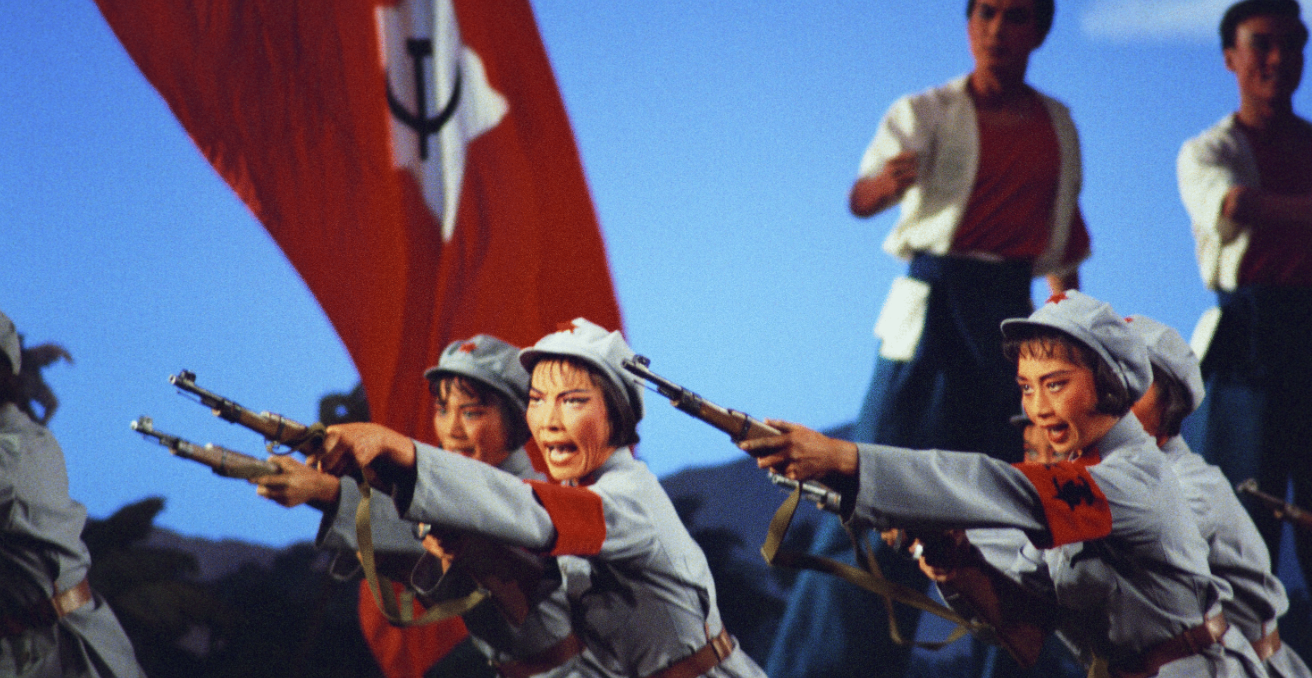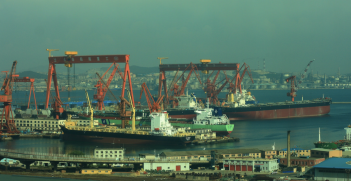Australia–China Relations and the Red Detachment of Women

As an instance of cultural and public diplomacy, the ballet Red Detachment of Women was a “win” for China in its objective of exhibiting enduring national strength, whilst also for Australia in its desire to demonstrate Australia’s commitment to freedom of expression and inclusivity.
The past few years have seen a period of turbulence in Australia–China relations. In 2017, the western media focused its attention on China’s political interference in the governance of other nations, and has continued to do so. In that same year, Australia was a global example when it became apparent that its political and cultural elites were unduly susceptible to influence by China’s interventions. Medcalf describes Australia in the period between 2016 and 2019 as having gone through a “reality check” in response to a “tapestry of activity from political donations and propaganda through to social mobilisation, intimidation of individuals, alleged misuse of academic links, cyber intrusions and espionage.” Examples of this “tapestry of activity” include Australia banning Chinese telecommunications company Huawei from its communications network, apparently due to fears that it might enable Chinese spying capability in Australia, and China stopping imports of Australian coal at its Dalian Port, an act that was perceived as economically threatening by some and caused the value of the Australian dollar to fall sharply.
These events raise important questions about the kinds of interventions that might improve relations, and the ways in which existing fit-for-purpose strategies, such as public diplomacy, serve this particular relationship in this particular era.
A Case Study of Cultural and Public Diplomacy: Red Detachment of Women
Red Detachment was performed in Melbourne in February 2017 in collaboration with four Australian arts organisations. First staged in China in 1964, Red Detachment presents the story of Wu Qionghua, a young peasant woman who joins the Red Army during the 1930s to escape persecution from a local landlord. Famous in the West for its performance for President Nixon and Henry Kissinger during their historic visit to China in 1972 — subsequently immortalised in John Adams and Alice Goodman’s 1987 opera Nixon in China — the Cultural-Revolution era ballet is one of the National Ballet’s most popular touring works and recognised internationally as a twentieth-century cultural icon. However, its association with the Cultural Revolution means that it is rarely performed in China now.
Red Detachment was a high-profile event in Melbourne’s season of performing arts. A total of 3990 people attended the four performances over three days at Arts Centre Melbourne. Collaboration between Arts Centre Melbourne and Trade Victoria — the state government’s trade promotion agency — also made sure that performances provided an opportunity for high-level diplomatic and business networking opportunities, with engagement from the Chinese Consulate in Melbourne and individuals and organisations with trade and business relationships in China. Self-reported data from the National Ballet of China and the Australian Ballet identified 237 Australian and 66 Asia-Pacific cultural, diplomatic, government, business, private sector, and sponsored guests and VIPs amongst the audiences for Red Detachment.
The Reception of Red Detachment
The Australian media response was divided between those who focused on the production’s aesthetic quality, which was generally positive, and those that saw it principally as a form of national expression, which was more negative. Media reviews that focused on its artistic elements emphasised the production’s distinctive visual and aural qualities, the skill of the dancers, and the significance of the work as an important piece of modern dance history.
Red Detachment was simultaneously the subject of media debate about the relationship between artistic freedom of expression, human rights history and cultural propaganda. Media reports pointed out that the ballet’s narrative is “vigorously unapologetic” in its celebration of Mao’s political ideology, with characters either “evil or courageous” depending on their allegiance to the People’s Liberation Army.
The performance sparked protests outside the venue led by Chinese-Australian members of the Embracing Australian Values Alliance, as well as a social media campaign that described the work as “fascist” propaganda. A similar reaction notably met the performance of Red Detachment in New York in 2015.
Red Detachment of Women as Public Diplomacy
While “attracting” and causing audiences to give China the “benefit of the doubt” may have represented Australia’s interests, these impacts may not have been so important to China. From Beijing’s point of view, the Australian media reception to Red Detachment, both positive and negative, can be framed as a clear success. The “vigorously unapologetic” production was an unabashed display of China’s power, and one which was arguably designed to impress China’s own visiting elite, as much as if not more than Australia’s, even whilst bridging the present and the past to display the enduring nature of Chinese identity. If China views diplomacy as a “fierce competition between leaders who win or lose face for the nations they embody,” then the production of Red Detachment was undoubtedly a win — albeit a modest one — for China.
If careful conflict management was one outcome of the controversy over Red Detachment, greater recognition of the complexity of diaspora diplomacy was another, and one that is as revealing of complexity as the first. Melissen observes that the “elusiveness and apparent unpredictability of public groups” often baffles diplomats. Protests over Red Detachment drew particular attention to the fractured nature of China’s diasporic communities. Australia has received several substantial waves of migration since the final abolition of the Immigration Restriction Act or “White Australia Policy” in 1966. Politically motivated emigration from China was a response to the student protests of 1989, after which 45,000 Chinese citizens in Australia applied for asylum, becoming the largest migration intake in Australian history. By the 2000s, migration was largely driven by newly affluent Chinese families aiming to improve their quality of life. In the decade between 2001/02 and 2009/10, the number of Chinese arrivals rose from nearly 7000 to nearly 17,000.
While Chinese-Australians of the 1990s largely seek to distance themselves from pro-Maoist ideology and are alarmed by China’s increasingly celebratory references to this history, immigrants of the second wave are more likely to be apolitical about China and culturally nostalgic. There is therefore no one, unified Melbourne Chinese community, a fact that highlights an inherent risk of public diplomacy: “one person’s masterpiece can be another’s blasphemy.” One audience member suggested that the choice to perform Red Detachment in Melbourne was a display of China’s contempt for its politically driven diaspora, by celebrating the very ideology they had escaped from.
The final, and arguably most significant, finding about the role of controversy in achieving diplomatic outcomes in the case of Red Detachment is that cultural events provide opportunities for expressions of uncertainty about the implications of international events within the public domain. Within the context of numerous Australia–China tensions in 2017, the ballet performance provided an opportunity for the public to consider and express their understanding of the relationship. In some cases, this expression was hyperbolic and hostile, such as the media report that suggested its deliberate strategy was apparent in the fact “that in precisely the period that China has been ratcheting up its claims on the South China Sea, the National Ballet Company of China has been performing The Red Detachment of Women on one international stage after another.” In other cases, it was deeply empathetic and protective of the sensitivities of Chinese Australians, such as the audience survey respondent who said “I felt like a production promoting one of the reasons that many Chinese migrants are living in Australia was a strange choice [for the festival organisers to program].” In both cases, the production allowed for public consideration of international political tensions in the relatively safe forum of a theatre venue.
Conclusion
The Melbourne production of Red Detachment of Women draws attention to the complexity in cultural diplomacy that is under-recognised in theoretical literature and evaluation practices. Such complexity includes the issue of potentially opposing aims of stakeholders, as well as the diversity of their publics, both abroad and at home. This article has argued that theories of cultural diplomacy and assessments of initiatives need to consider the multiple and competing objectives, diverse publics and controversial receptions that cultural diplomatic initiatives may bring to light.
Red Detachment was a “win” for China in its objective of exhibiting enduring national strength, whilst also for Australia in its desire to demonstrate Australia’s commitment to freedom of expression and inclusivity. This illustrates that very different objectives can be met simultaneously. Red Detachment also drew attention to Australia’s diverse Chinese communities, giving the Australian producers the opportunity to learn about the politics of this diversity and to find ways to accommodate it. All of these responses to the production reveal complexity, controversy and ambivalence, characteristics that may well be the defining characteristics of twenty-first-century public diplomacy.
Associate Professor Katya Johanson is associate dean at Deakin University. Her research interests include the politics of cultural production.
Dr Amanda Coles is a lecturer in the Department of Management in Deakin Business School.
Associate Professor Hilary Glow is associate professor at Deakin University.
Caitlin Vincent is a researcher at Deakin Business School.
This article is an extract from the article in Volume 73, Issue 4 of the Australian Journal of International Affairs titled “Controversy, uncertainty and the diverse public in cultural diplomacy: Australia–China relations.” It is republished with permission.





